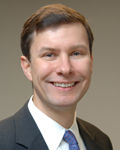CIOs gauge decade of health IT headway

 John Halamka, MD, Beth Israel Deaconess Medical Center
John Halamka, MD, Beth Israel Deaconess Medical Center
John Halamka, CIO of Beth Israel Medical Center in Boston and a longtime standards guru, tends to focus his attention on the task ahead. But he has been thinking about the past recently.
“When I first became a CIO, my role involved writing applications and managing architecture at a detailed level,” he recalled.
However, over the past 17 years, he said, his role has become much more strategic. He’s had to make sure the right investments were made for BIDMC, that the right architecture was in place and that the resources were there to support it.
“I've had to master the political, communication and interpersonal skills of leading rather than the technical skills of being a strong individual IT contributor,” he said.
He’s had to do so, not merely as CIO of one organization, but also in his broader role in the industry. Halamka serves as chairman of the New England Healthcare Exchange Network and co-chair of the Health IT Standards Committee that advises the federal government. He is a full professor at Harvard Medical School, and a practicing emergency physician, not to mention that he and his wife Kathy are building Unity Farm, work that he chronicles regularly on his blog.
The work of the CIO and IT team has grown exponentially over the past 10 years, according to Halamka.
“BIDMC has grown by merger and acquisition requiring transformational IT solutions such as care management applications, population health analytics, community-wide HIE, big data management and mobile enablement for all our stakeholders,” he said.
BIDMC is not unique in finding itself in this position, and some can’t keep up.
“Demand and expectations have exceeded the ability of many IT organizations to keep customers satisfied,” Halamka said.
 Scott MacLean, Partners HealthCare
Scott MacLean, Partners HealthCare
Scott MacLean, deputy CIO and director of IS Operations, at Partners HealthCare in Boston, said he and his colleagues approach their work differently today than 10 years ago.
“We are not arguing that CPOE, electronic medication administration and other EHR functions are efficacious,” he said. “We are busy optimizing and measuring the results of these interventions.”
Just as CIOs and IT teams have changed how they look at their work, so have organizations. At Partners, which is in the midst of an Epic system rollout, MacLean says: “We realized that much of the functionality we developed is available commercially, so we're adopting a vendor platform and will focus our innovation on genomics and other research discoveries we want to bring to the bedside and clinics.”
As he sees it, collaboration has taken hold across the industry, and interoperability is top of mind.
“In the past, healthcare systems sought to keep their patients' information and HIT vendors wanted to sell all of their products to a provider, MacLean said. While that may still be the case at times, he said, “policy and payment models are driving collaboration, which will benefit consumers and save money.”
Collaboration is on Ed Ricks’ mind, too. Ricks, vice president and CIO at Beaufort Memorial Hospital in Beaufort, S.C., said, “I think it's a very different skillset today. We're collaborators now, working with the medical staff, and I'm trying to make the technology invisible to clinicians, and to open workflows. The technology is so cool right now and nobody has to care about the tech as much as what it does."
 George Hickman, Albany Medical Center
George Hickman, Albany Medical Center
George Hickman, executive vice president and CIO at Albany Medical Center in New York State’s capital city, works as hard as he ever has over the past 10 years, but he has to be more strategic, he said.
“I move as fast as I ever did,” Hickman said, “but I am much more deliberate about priorities. I pay attention to what could be most beneficial, most costly and most risky – in both qualitative and quantitative terms.” This change, he said, is both intuitive and analytical, and it has come with experience.
As was the case with many other health systems across the country over the past 10 years, the biggest change at Albany Medical Center was the implementation of an enterprise-wide electronic health record system, Hickman said, and all the supporting, secure infrastructure and people change expectations.
Hickman foresees many more challenges ahead. “How we understand, use and even exploit our data will be our next ‘EHR-like’ challenge,” he proffered. “I expect that this frontier will take the same sort of time and teaching patience, may be somewhat costly, and will certainly be transformative.”
 Harry Greenspun, MD, DeLoitte
Harry Greenspun, MD, DeLoitte
"When you think back 10 years, at that time we had an industry way behind others," said Harry Greenspun, MD, senior advisor at Deloitte's Center for Health Solutions. "Stimulus and meaningful use gave us that push. It has created a tipping point of EHR adoption, now it's actually happening and not just among brave innovators but bread-and-butter folks."
As Greenspun sees it, pretty soon, if you can't do a lot of simple things, like checking in at the doctor's office electronically, it will be hard to remain competitive.
"My needs as a patient haven't changed, but my expectations as a consumer have," Greenspun said.
























